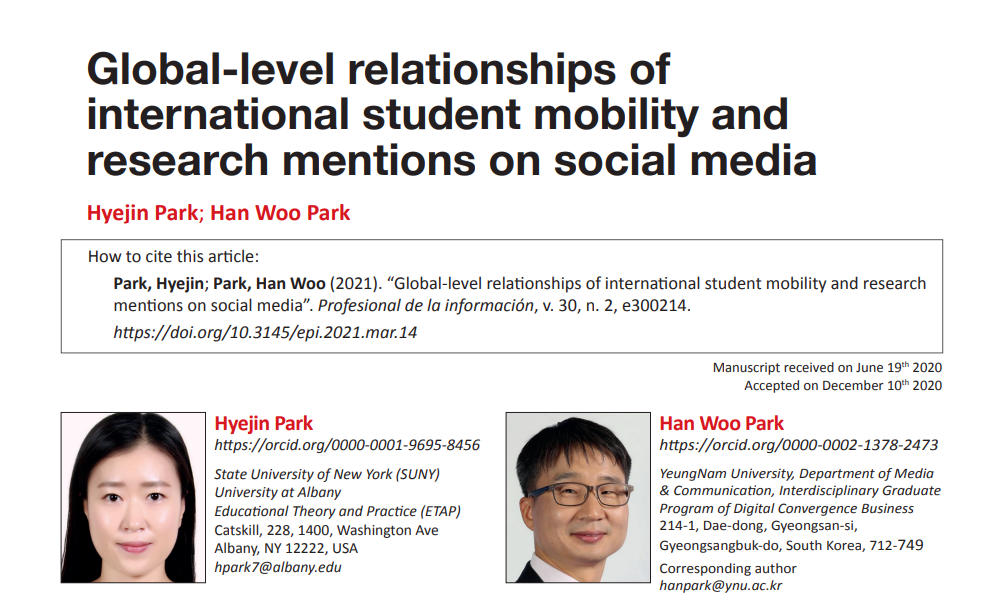
Global-level relationships of international student mobility and research mentions on social media
On Sale
€15.00
€15.00
Abstract: This paper explores the structural connectedness and associations of international student mobility and scholarly communication on a global scale. First, it examines the exchange of international students. Next, it investigates network structures of international student mobility and scholarly communication on two social media platforms, Twitter and Mendeley. It also determines which social media platform predicts more inter-country student exchange networks than the other and their statistical relationship. Data are obtained from Unesco for student mobility networks and Altmetric.com for scholarly communication on social media. Scholarly communication activities are measured by two factors: Mendeley-based research citations and Twitter-mediated research mentions. As a result, China and the USA exchanged most international students. The network structures of student mobility and online scholarly communication followed the ideas of World System Theory that describes core, periphery, and semi-periphery areas. The network analyses showed that the USA hosted the largest number of overseas students and was positioned at the center of student mobility and scholarly communication on Mendeley. The UK was in the central position on Twitter. Furthermore, research citations on Mendeley had a higher statistical correlation with international student mobility than research mentions on Twitterhad. More importantly, a greater number of research citations on Mendeley predicted an increase in student mobility, and the Twitter network showed the highest density and shortest geodesic distance. The findings of this research may suggest that social media can be used effectively to spread academic ideas in the real and online worlds while considering the features of social media and related policies in different countries. Besides, worldwide intellectual mobility may enhance decentralization and co-development of the global academic society, which would be better assisted by proper utilization of social media.
